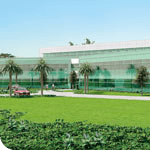
Grocery stores in India are beginning to stock up with more western-style food products to satisfy the country’s growing demand for packaged, meal-in-a-hurry options. In fact, packaged food retail value sales in India grew 15% in 2007—the largest jump the country witnessed in the last nine years (Source: Euromonitor International). Thanks to a booming economy, an emerging middle class, and the rise in the number of two-income families, Indians have a growing “appetite” for convenience.
India is already known as a large food producer; in fact it is the second largest in the world. In terms of value addition (food processing) however, the country has a long way to go to increase the share of processed foods as a significant contributor to its export base. India, especially South India, which has a well-diversified presence in agriculture, horticulture, poultry, livestock, dairy, fisheries, and seafood is well positioned to significantly increase the “value addition” categories and assist India in becoming a “food factory” to the world in the years to come. Aiding this effort is the thrust by the Central and State Governments through various initiatives for the food processing sector.
To take advantage of this market opportunity, the Chennai, India construction and development company, Consolidated Construction Consortium Limited (CCCL), purchased 200 parcels of land near the ancient port city of Tuticorin in southern India. It plans to create Pearl City™ Food Port, a 300-acre Special Economic Zone (SEZ) that will house at least a dozen food manufacturing plants and the housing, schools, and retail stores needed for a self-contained community.
An economic-development tool common in India, SEZs are tariff- and tax-free enclaves that attract foreign investors and promote exports. When domestic companies operate within an SEZ, they become much more competitive globally. But CCCL’s Tuticorin project is unique because it affords international food companies an opportunity to easily expand sales throughout India and Asia.
Early in this ambitious project, CCCL launched a search for the right partner to provide the master planning for the new SEZ. To qualify, A/E firms had to have strong food industry credentials and international experience. This led them directly to SSOE, long known and respected as a major player in the food industry. “CCCL understood that we could design a food site that would attract international companies,” says Vince DiPofi, PE, SSOE Senior Vice President.
Pearl City Food Port is an exciting project for SSOE because of the scope of its involvement. The master plan combines traditional architectural and engineering services with a component of marketing. “SSOE is working on the whole-site layout,” says Ayers Morrison, AIA, LEEDTM, SSOE’s Design Leader, “planning how much will be commercial, how much housing, and how much plants.” SSOE is at 50 percent completion on the master planning phase of the project.
“SSOE is using the latest technology to create 3-D fly-throughs that depict the finished site and will be used to help market the project to potential manufacturers interested in locating to the site,” says Alan Liddy, AIA, SSOE’s Lead Architect on the project.
CCCL expects to attract Europeans, Americans, and Asians to work in the complex and encourage them to move their families there as well. With that in mind, SSOE’s master plan for the SEZ calls for an “international” look. Its architecture will have “an international appeal and be designed to international standards,” says Liddy. The location near the Gulf of Mannar was a strategic decision. Tuticorin is one of the oldest seaports in the world, dating back to the Sixth Century. The SEZ’s companies will have quick access to Indonesia and other Asian countries. DiPofi explains that this “construction ready” site will be a particularly beneficial way for international food companies to locate in India because the transportation access, power supply, utilities, and availability of land is unique within India. Proximity to a seaport and rail and road networks is very important because raw materials can come in and products can go out easily.
CCCL’s entry into the food manufacturing business is unique, “You don’t often see a cluster of food plants [in India],” says DiPofi. “There’s going to be a synergy about it.” With thoughtful master planning, the companies will share the infrastructure and facilities including cold storage, warehouses, an irradiation complex, food testing laboratory, logistics planning, uninterrupted power and water, waste treatment and a distribution center resulting in reduced costs. Working with CCCL is expanding SSOE’s already considerable international expertise into the immense India market. Through the structure of the SEZs, clients have a more predictable and cost-effective way to grow internationally.
For more information on the Pearl City Food Port, visit www.ssoe.com/LP/PearlCity.aspx or contact Vince DiPofi, PE at vdipofi@ssoe.com.
Special Economic Zones
- are geographic regions, averaging about 200 acres, where manufacturers and other enterprises operate under more liberal taxes, tariffs, and duties than in other regions in the country. They can be set up by the public or private sector, or jointly.
- Approximately one dozen countries have SEZs. Typically, their goals are to enhance foreign investment, bolster exports, and help domestic enterprises to compete globally.
- The policy for setting up SEZs in India was put in place in January, 2006.
- Today there are approximately 29 different types of industries / activities operating in SEZs in India.
